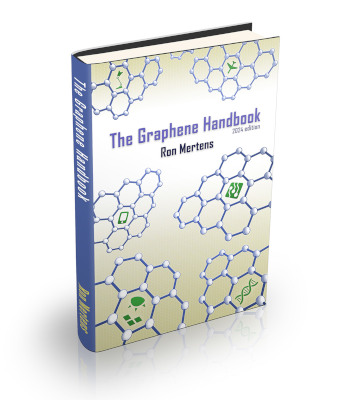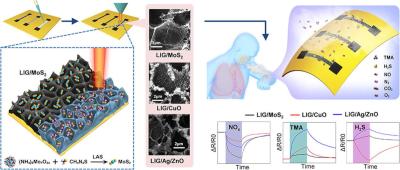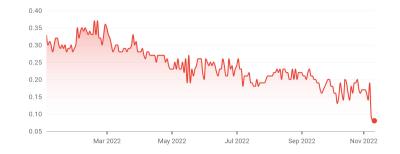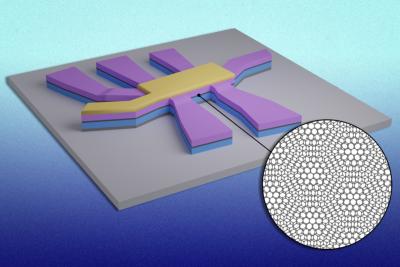The Graphene-Info weekly newsletter
Published: Tue, 01/31/23
The Graphene-Info newsletter (January 31, 2023)
Cannot read this? View it online here
BGS launches graphene-enhanced admixture for the concrete market
Bio Graphene Solutions (BGS) recently announced the development of the its first graphene-enhanced product for the concrete market.
Leveraging its capability of converting 100% organic materials into high-quality graphene via a patented cleantech process, BGS has developed a strength performance admixture for commercial concrete mix designs.
The Graphene Handbook, 2023 edition
We're happy to announce the tenth edition of Graphene-Info's very own Graphene Handbook, the most comprehensive resource on graphene technology, industry and market - now updated for 2023. Get your copy now to stay current on graphene research, development and market!
Reading this book, you'll learn all about:
- The properties of graphene
- Different production methods
- Possible graphene applications
- The latest graphene research
- The current market for graphene materials and products
- The main graphene challenges
- Other promising 2D materials
The book also provides:
- A history of graphene developments
- A graphene investment guide
- An introduction to graphene metrology and standardization
- A comprehensive list of graphene companies
- A guide to other carbon allotropes
The graphene handbook has been read by leading material engineers, business developers, researchers, equipment vendors, private investors and others who wish to learn more about graphene today and in the future. We truly believe that it is the best introduction to graphene!
Researchers develop improved method for producing graphene-based gas sensors
Researchers from Penn State and University of Electronic Science and Technology of China recently enhanced their gas sensor manufacturing process through an in situ laser-assisted manufacturing approach, improving on their previous method of drop casting (dropping materials one by one onto a substrate using a pipette.
Flexible gas sensors can be used as medical devices to identify health conditions by detecting oxygen or carbon dioxide levels in the breath or sweat. They are also useful for monitoring air quality in indoor or outdoor environments by detecting gas, biomolecules and chemicals.
Applied Graphene Materials says its shares will stop trading soon as it still searches for a buyer
In November 2022, Applied Graphene Materials (AGM) announced that it aimed to raise money to fund its operations, but was unable to do so. AGM Later said it received non-binding indicative proposals for its sale.
AGM now announced that trading in its shares will be suspended from next Wednesday (February 1st) as the company confirmed it will not publish its reports by the market deadline. The company has until the end of February before it runs out of money.
Researchers find superconductivity that can be turned on and off in "magic angle" graphene
Researchers at MIT and National Institute for Materials Science in Tsukuba, Japan, have found a new and intriguing property of “magic-angle” graphene: superconductivity that can be turned on and off with an electric pulse, much like a light switch.
The discovery could lead to ultrafast, energy-efficient superconducting transistors for neuromorphic devices — electronics designed to operate in a way similar to the rapid on/off firing of neurons in the human brain.
Graphenea takes part in effort to achieve ultrasensitive detection of SARS-CoV-2 spike protein using graphene field-effect transistors
Researchers from Graphenea, Ikerbasque, BCMaterials, Center for Cooperative Research in Biomaterials (CIC biomaGUNE) of the Basque Research and Technology Alliance (BRTA), University of the Basque Country UPV-EHU, University of Trieste and Universidade da Coruña recently reported a graphene field effect transistors (GFET) array biosensor for the detection of SARS-CoV-2 spike protein, using the human membrane protein involved in the virus internalisation: angiotensin-converting enzyme 2 (ACE2).
By finely controlling the graphene functionalization, by tuning the Debye length, and by deeply characterizing the ACE2-spike protein interactions, the team managed to detect the target protein with an extremely low limit of detection (2.94 aM).
Metalgrass LTD
9 Har Tsin St.
Kfar Sava Hasharon 4430809
ISRAEL
Unsubscribe | Change Subscriber Options








